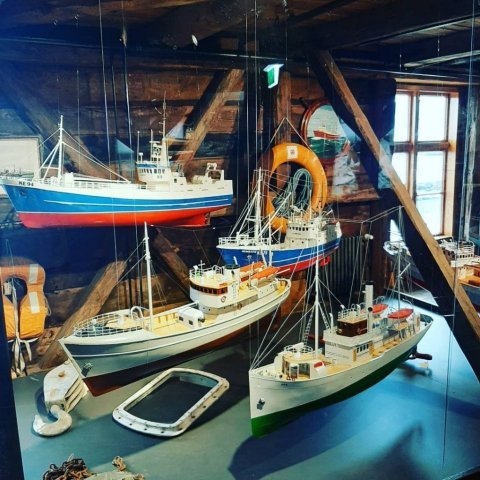Listening to the sea
Listening to the Sea
The exhibition relates on the close bonds between the seamen and the ocean around Reykjanes during the rowing boat era, which lasted from the settlement of Iceland until the beginning of the 20th century. The exhibition gives a glimpse into the world of these bonds between the sailors and often capricious sea, sometimes tender and smooth, but more often rough and risky and constantly demanding offering of fishermen lives.
The rowing boat foreman had to learn how to listen to the sea and observe the movements of the ocean and the appearance of the sky and clouds to evaluate whether it was safe to go fishing every morning. Those, who had mastered the art of listening to the sea, understood the movement of the ocean so well, that they knew exactly were the boat was every time, even if it was so dark that the crew could barely see anything over the boat´s railing.
But even though the sound of the sea proved to be a sure guiding light, the fishing trips on small rowing boats proved to be extremely risky and dangerous, especially when rowing during the winter fishing season.
The inhabitants of Reykjanes area were entirely dependent on the fisheries and the important dried fish trade and later the salted cod. The fishermen sought their livelihood in the golden chest underneath the sea surface. Without the rich fishing grounds this area would not have been habitable. Keflavik became early a trading place for foreign merchants, mostly Danes, and all their trade was built on the export of dried and salted fish.
Grímur Karlsson's boat models are part of the exhibition.

